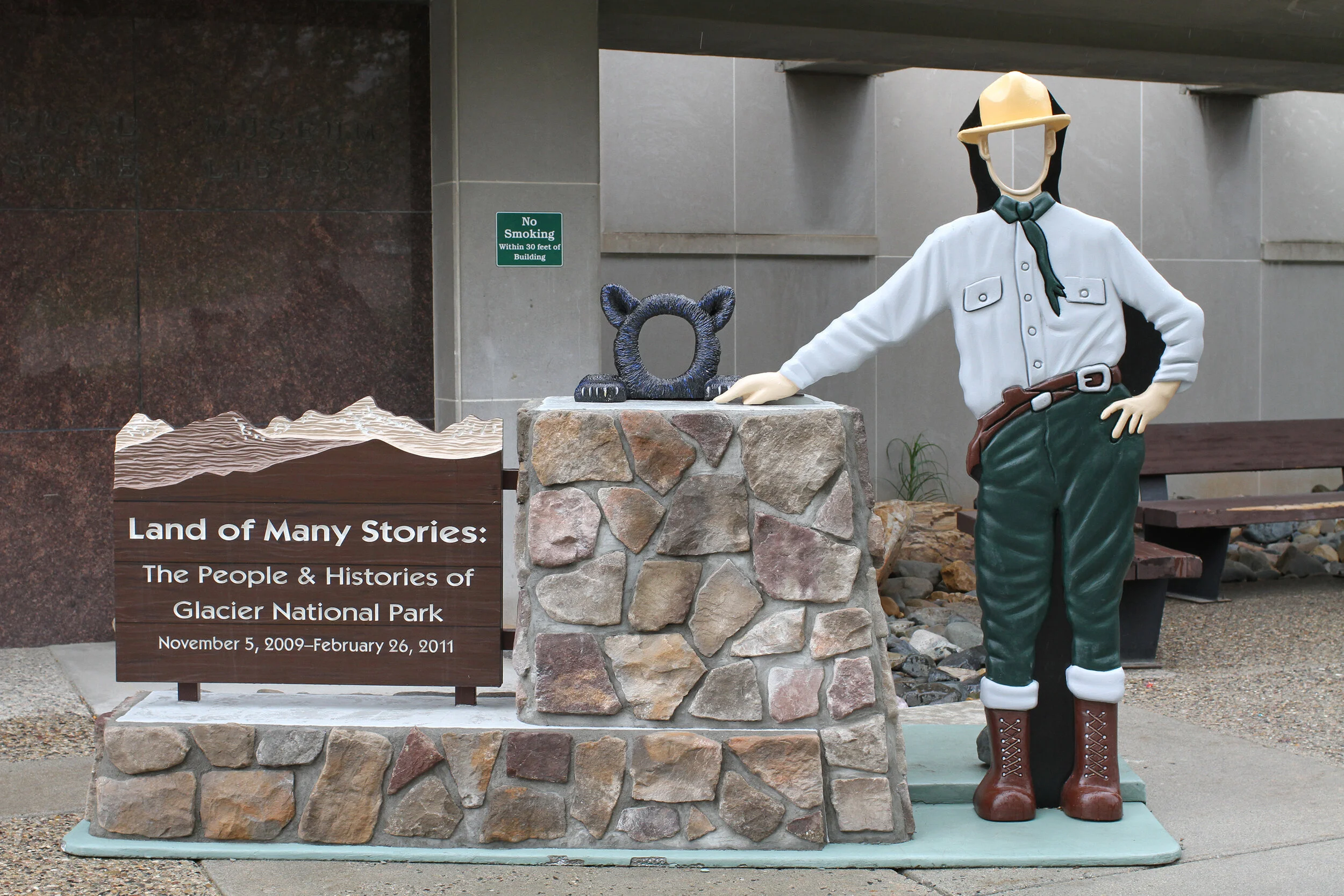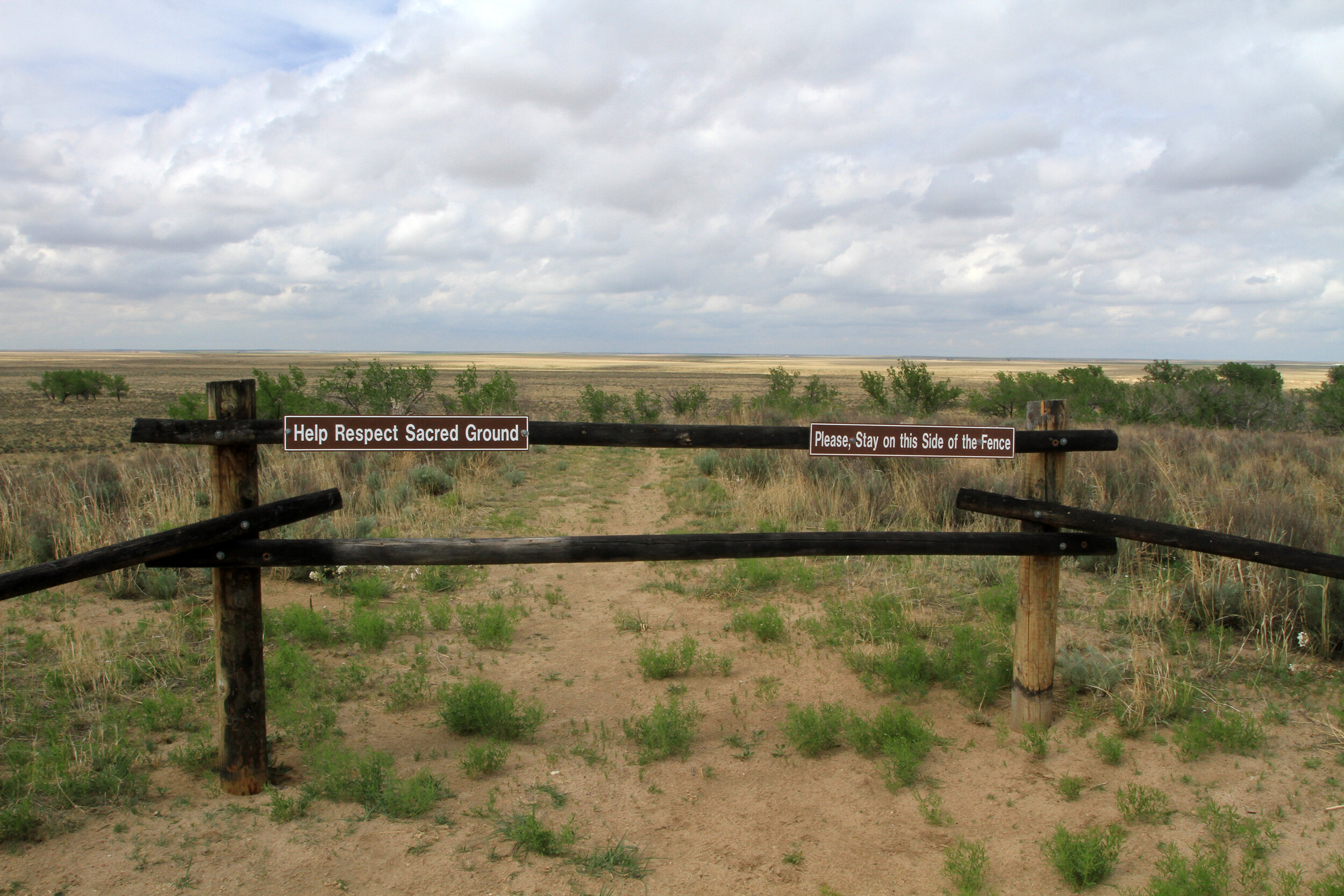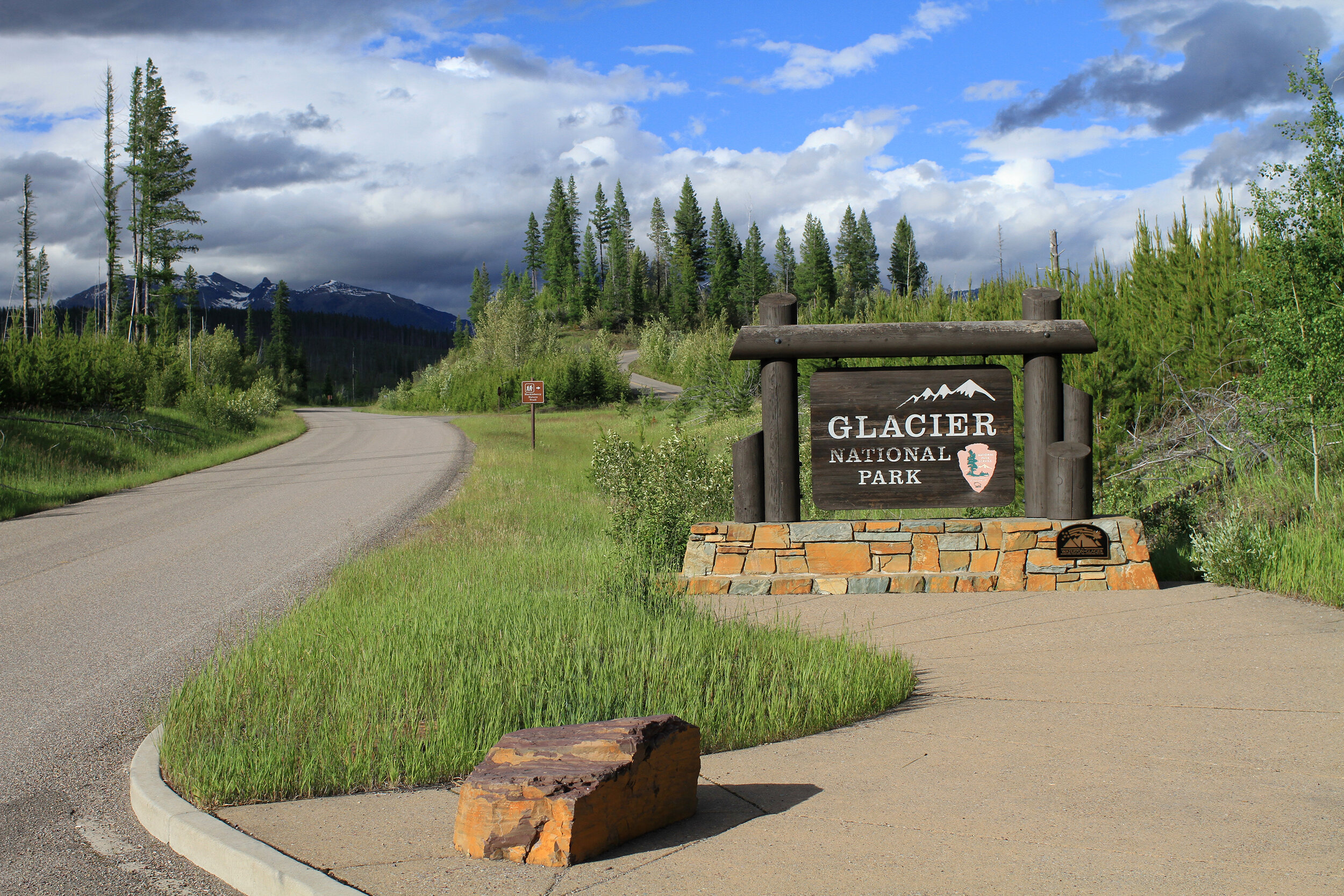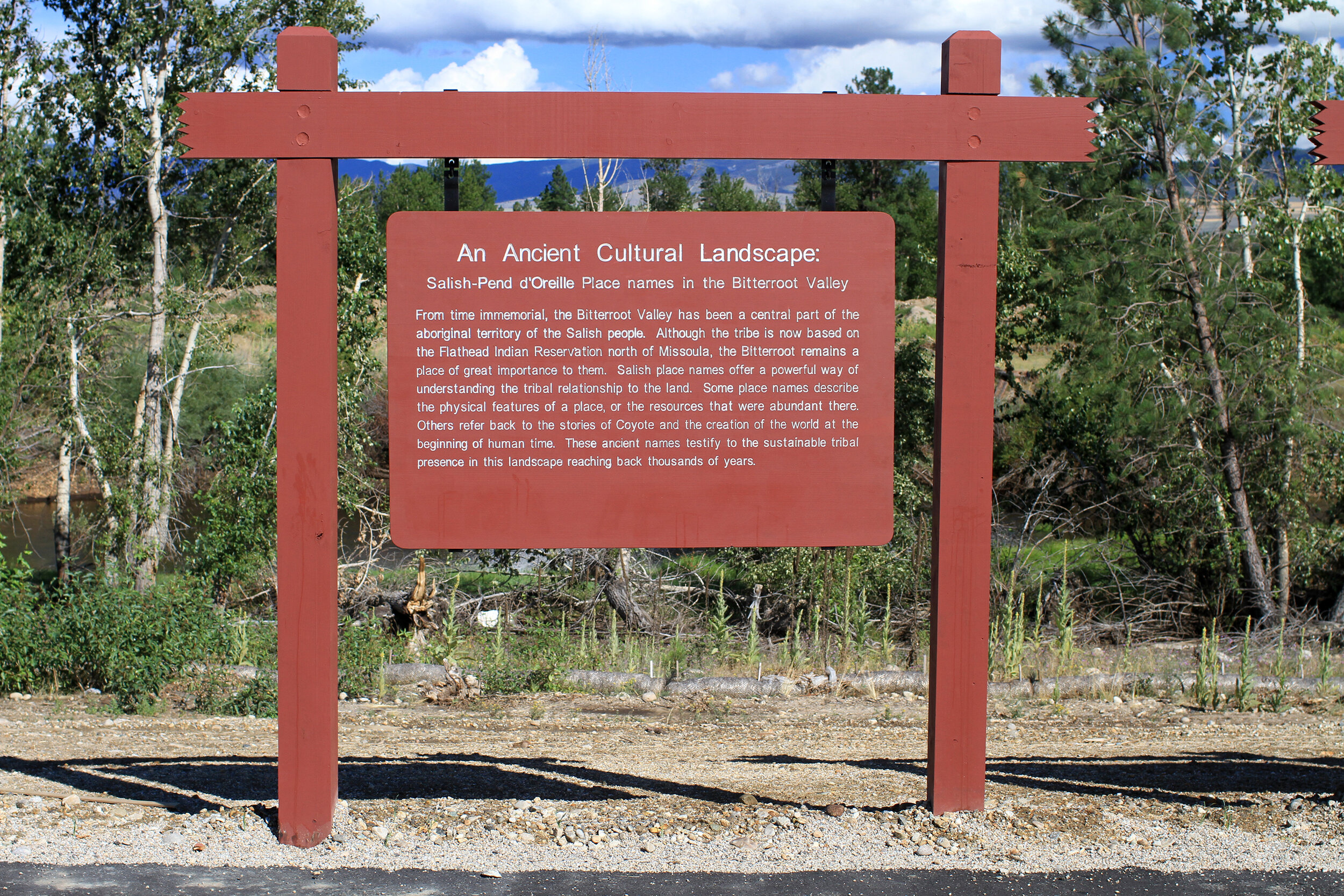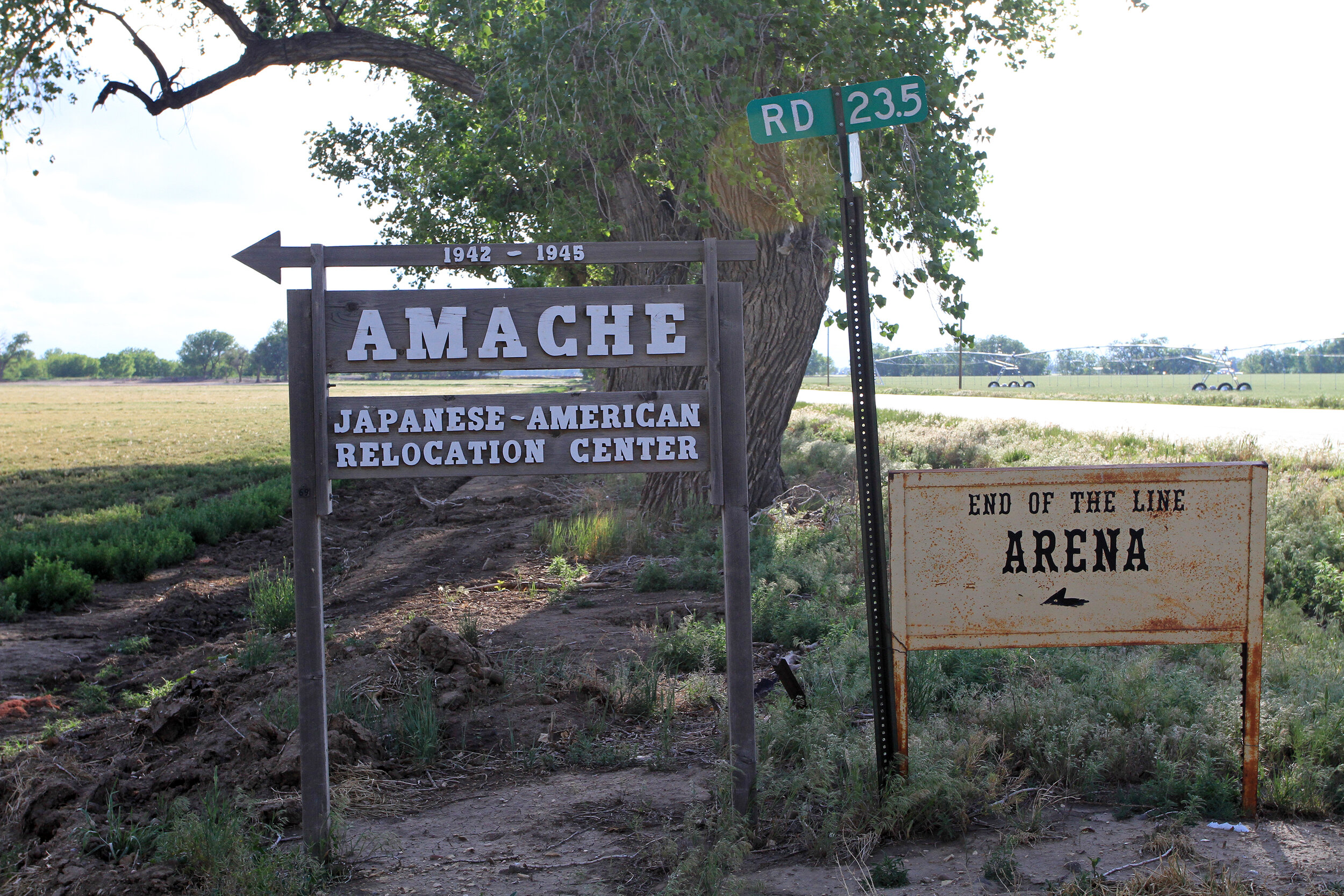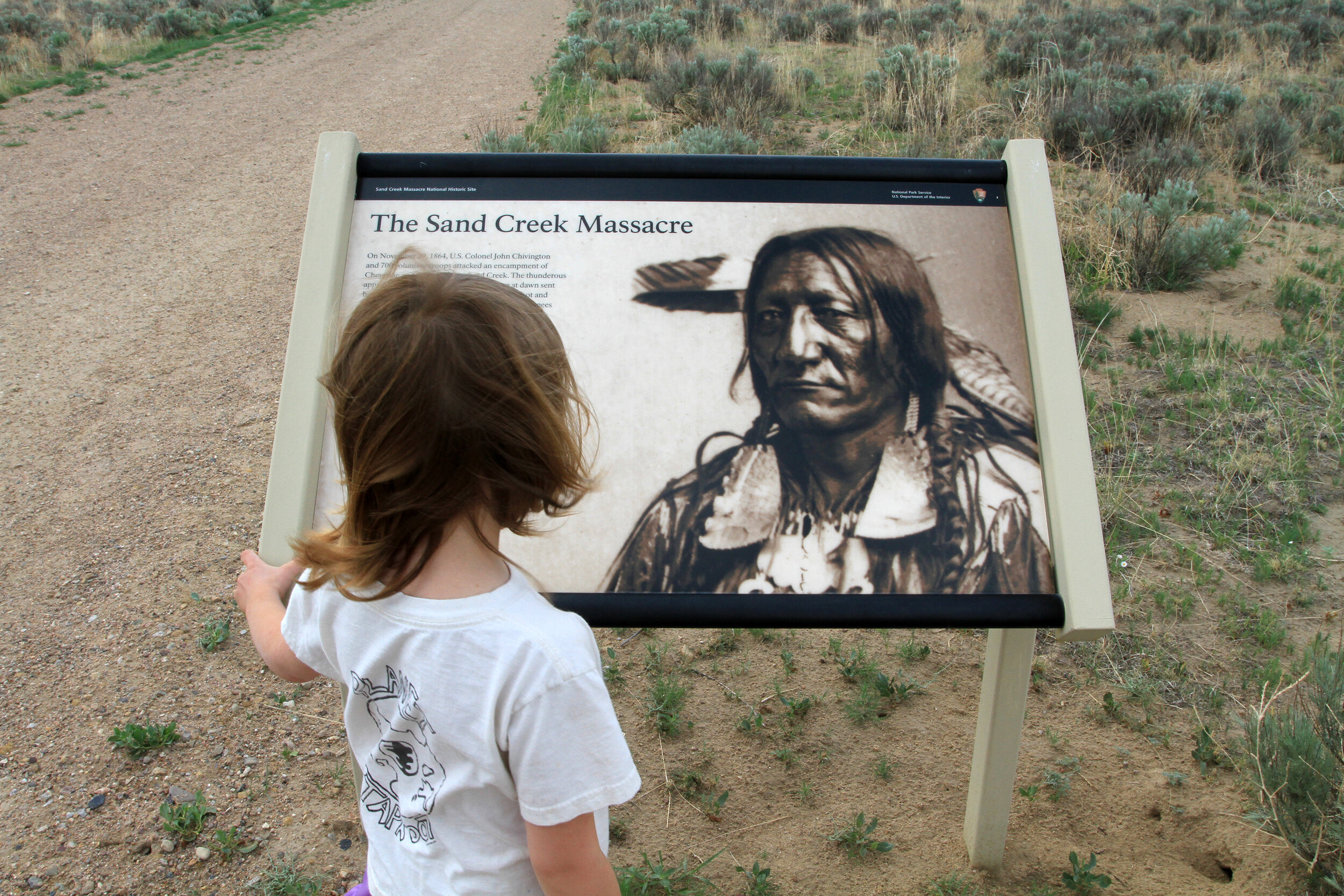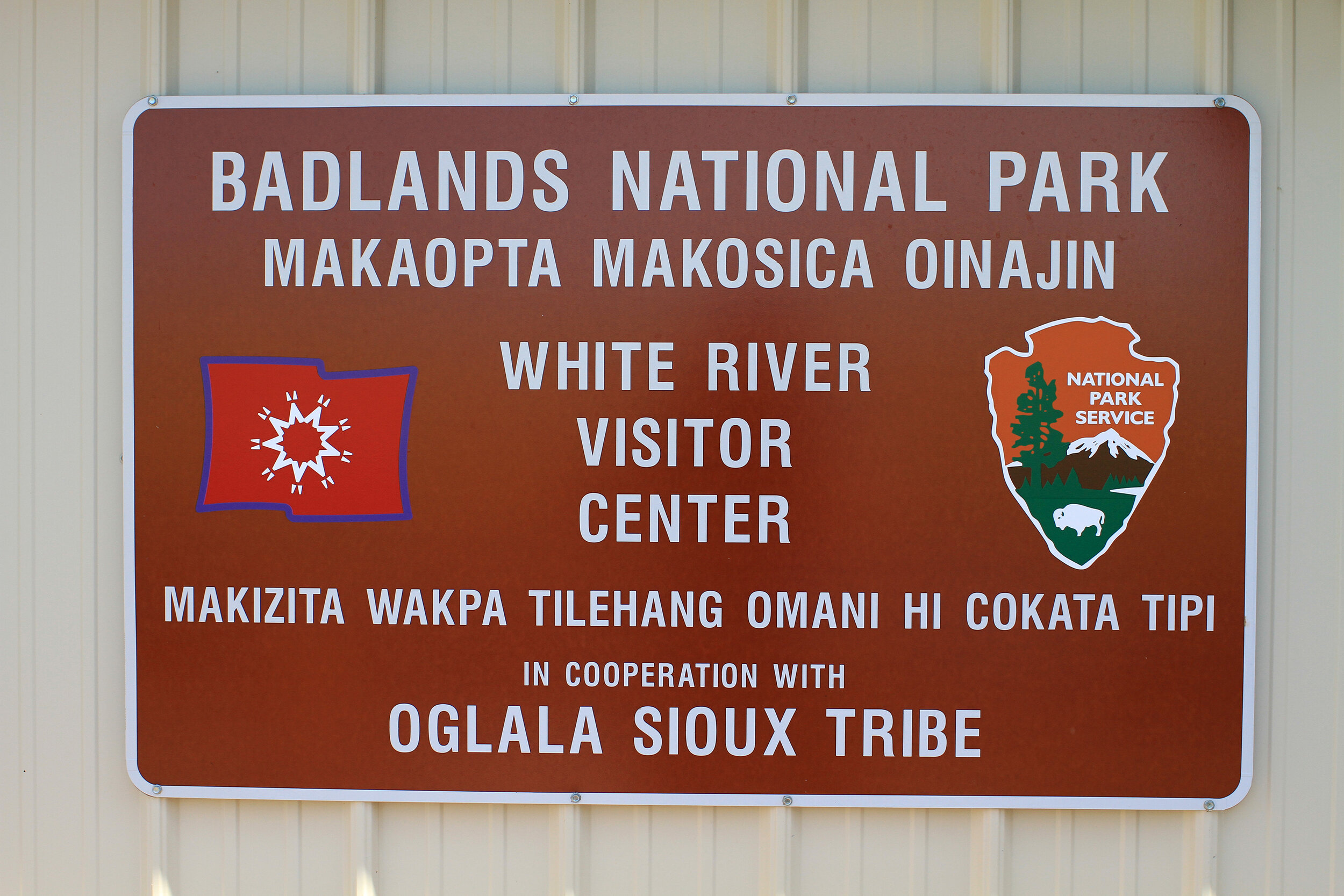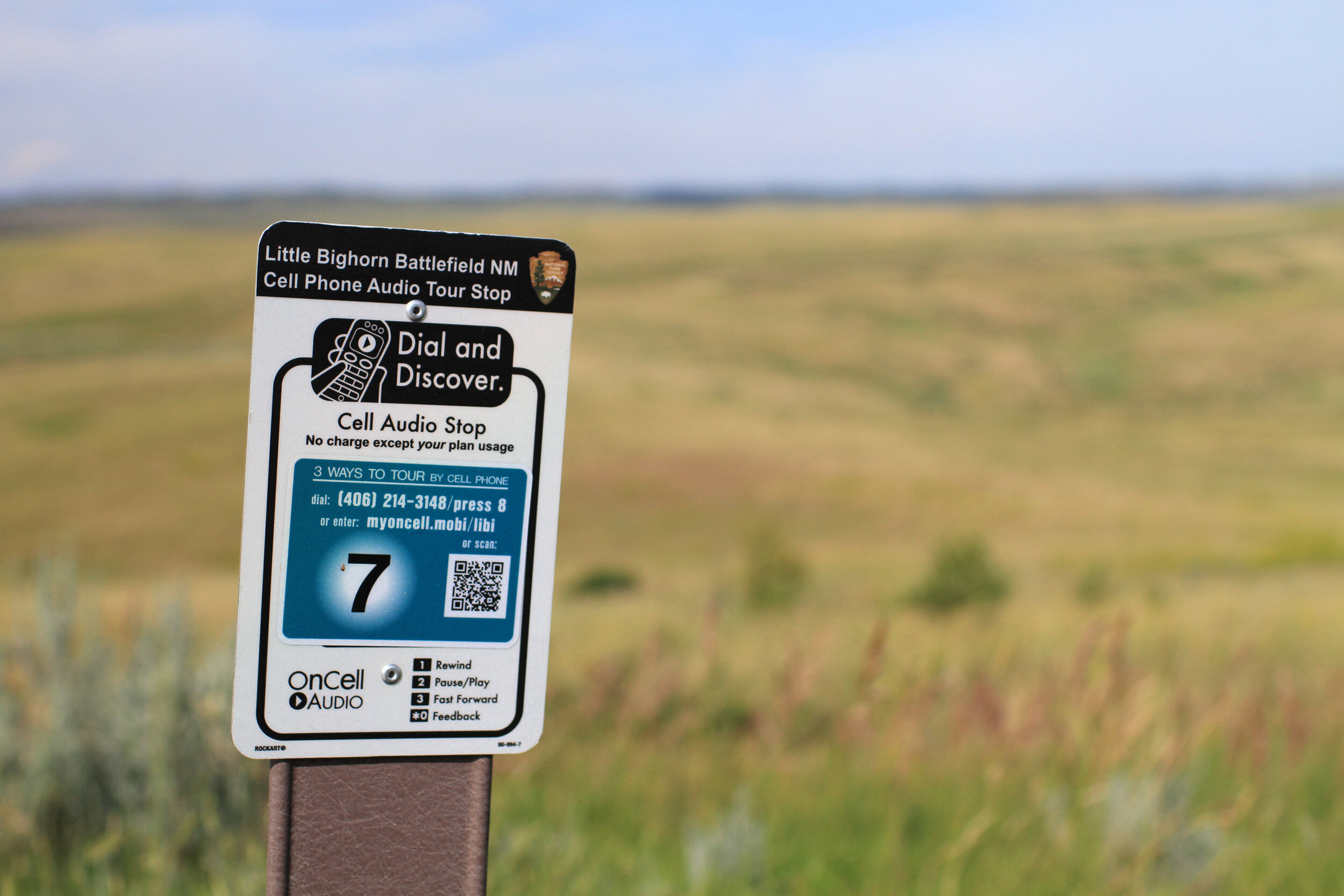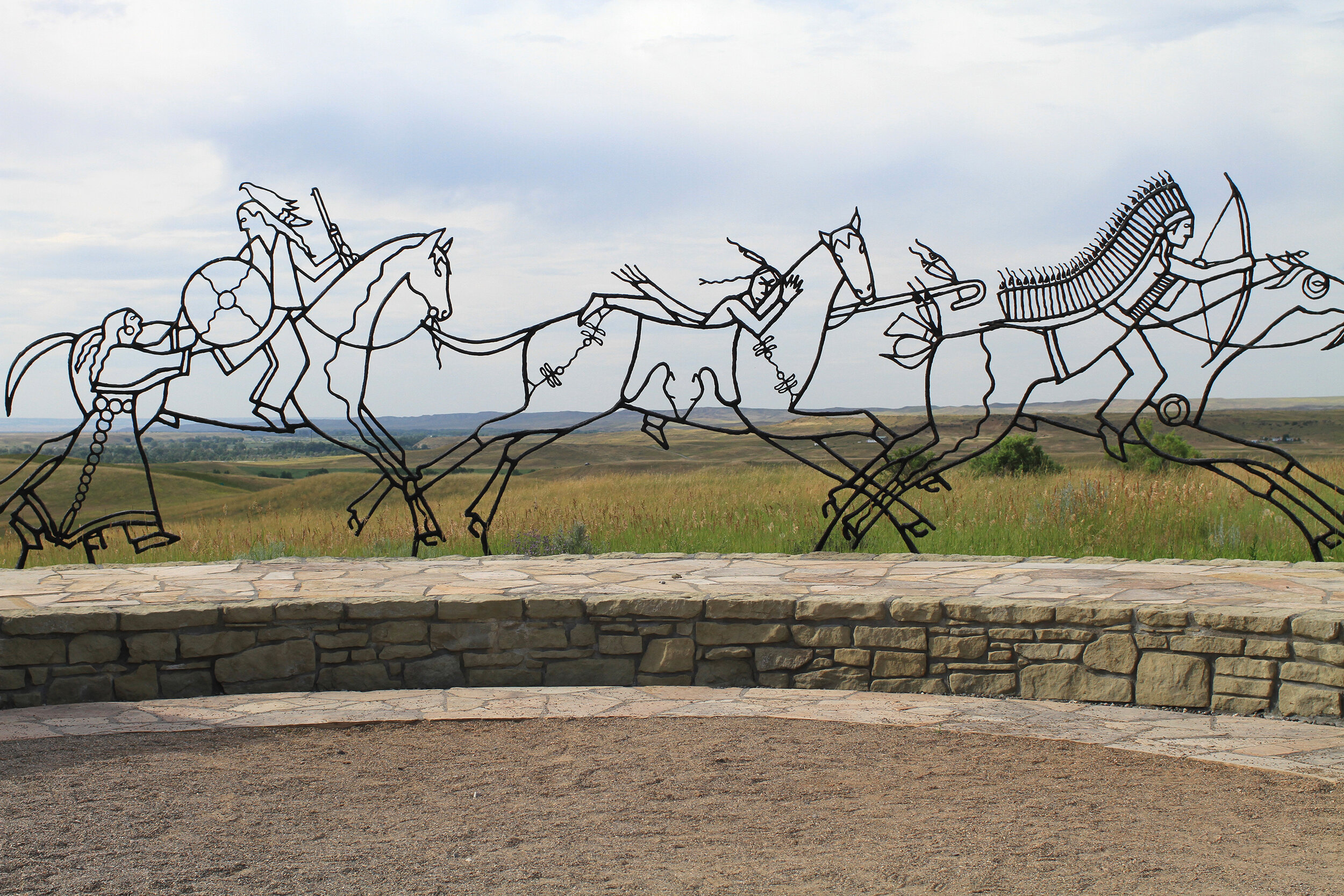Pink Bunny by Laurie Hogin
Prefigurative Park Services (PPS) is a public art and history studio focused on reimagining parks, especially anti-colonial relationships between people(s) and parks in the Anthropocene. Founded by Nicholas Brown and Ryan Griffis, Prefigurative Park Services works with artists, students, activists, First Nations, governmental agencies, and cultural institutions on experimental approaches to activating histories, landscapes, memories, and public spaces. PPS produces critical tours, mobile seminars, maps, exhibitions, and more.
What is a national park? What sorts of relations are implied through the conjunction of nations and parks? Who do parks serve? And what do they preserve? What role do parks play in struggles for social and environmental justice? How might we imagine and prefigure parks differently? In 2016, the U.S. National Park Service (NPS) celebrated its one hundredth anniversary. This milestone presented us with an opportunity to reflect, critically, on the nature(s) of national parks.
Taking inspiration from photographer Richard Misrach’s “Bravo 20 National Park,” proposed in 1990 as a memorial to the social and environmental devastation caused by military testing in northwestern Nevada, Prefigurative Park Services speculates about how parks might function differently in relation to ongoing struggles for social and environmental justice. It envisions parks as social processes and as participatory, decolonial spaces. PPS builds on Misrach’s precedent along with more recent projects such as the Temporary Travel Office’s “Contaminating the Preserve,” the National Toxic Land/Labor Conservation Service’s “National Cold War Monuments and Environmental Heritage Trail,” Shawna Dempsey and Lorri Millan’s Lesbian National Parks and Services Field Guide to North America, Amy Balkin’s “Public Smog” and “Invisible-5,” Sarah Kanouse’s “Around Crab Orchard,” Shiloh Krupar’s Hot Spotter’s Report, the Futurefarmers’ Great Park Project, the interpretive praxis of the Los Angeles Urban Rangers, and David Suzuki’s Homegrown National Park, which aims to create a crowd-sourced green corridor through the heart of Toronto, along the former route of Garrison Creek. Like these projects, PPS embodies the spirit of “experimental geography,” which Trevor Paglen defines as self-reflexive participation in the production of space. [1] More than mere critique, PPS actively contributes to processes of world-making. [2]
National parks have been characterized as “playgrounds of the people.” In 1919, Secretary of the Interior Franklin Knight Lane observed, “To see them is to make more hearty your affection and admiration for America.” [3] According to Stephen T. Mather, the first director of the National Park Service, visiting the parks “inspires love of country; begets contentment; engenders pride of possession; contains the antidote for national restlessness.” [4] This message, which conflates patriotism and preservation, has persisted. Prior to the NPS’s golden anniversary in 1966, Conrad Wirth, the longest-serving director, argued that sustaining the parks is “an investment in the physical, mental, and spiritual well-being of Americans as individuals.” [5] Scholars have long noted the dense linkages between national parks and “the establishment of the modern territorial state and the creation of a corresponding national citizenry.” [6] Moving beyond critique, what emerges when we decouple parks from nation-states, when we conceive of them as something other than “America’s Best Idea?” [7] Prefigurative Park Services considers how this shift might engender something more substantive and just than individual pride of possession.
To facilitate this shift, PPS draws on another precedent, one that demonstrates how the national park model has been modified and used to different ends. Citing Ute Mountain Tribal Park (Colorado), Frog Bay Tribal National Park (Wisconsin), and Tla-o-qui-aht Tribal Parks (Vancouver Island, British Columbia), Clint Carroll argues that tribal parks “represent the reclamation of Indigenous space—a sovereign act of reterritorialization in a settler colonial context.” [8] As part of a “larger systemic reclamation of Indigenous sovereignty and territory through environmental stewardship,” these parks not only challenge assumptions about conservation enclosures, they also actively create new spaces of stewardship that are not predicated on indigenous dispossession. [9] Tribal parks, along with other entities such as the Mission Mountains Tribal Wilderness (Montana) and Navajo Nation Parks and Recreation (Arizona), function as “critical spaces” that “foster the perpetuation of Indigenous land-based practices, and, in turn, offer unique contributions to North American environmentalism.” [10]
The NPS centennial was not the only significant conservation milestone in the last decade. 2014 marked the 50th anniversary of the Wilderness Act of 1964, and 2018 was the 50th anniversary of the National Trails System Act (NTSA). During this period of commemoration, PPS reflected on the relationships—both real and possible—between parks, wilderness areas, and trails. Once heralded as “island[s] of safety in this riotous world,” the isolation of national parks is now regarded as a liability in an era of rapid climate change. [11] Today, “islandization” or habitat fragmentation is seen as a grave threat to biodiversity. Recognizing the growing incompatibility of ecological and administrative boundaries, scientists now stress the need to “think big,” and to link parks and wilderness areas via wildlife corridors. [12] New conservation geographies such as the Yellowstone to Yukon Conservation Initiative (Y2Y) promote landscape connectivity on immense scales, allowing wildlife the freedom to roam across vast territories in order to adapt to a warming world. These trends raise important questions and challenge longstanding assumptions about scale and mobility. Prefigurative Park Services adds political possibility to the list of endangered species. As Felix Guattari notes, “It is not only species that are becoming extinct but also the words, phrases, and gestures of human solidarity.” [13] The freedom to roam, invoked by PPS, thus refers primarily to forms of political mobility. Like Henri Lefebvre’s notion of the “right to the city,” it speaks to the need for a more capacious political imagination. [14]
The motto for the National Trails System is “connecting history, cultures, landscapes.” Although it shares this mission, PPS scrutinizes the act of making connections. Histories, cultures, and landscapes are rarely self-evident; they do not preexist their construction. The Lewis & Clark National Historic Trail, for example, literally weaves a spatial narrative of American exceptionalism. How might we tell a different story—and prefigure a different world—by linking other histories, cultures, and landscapes?
Emphasizing the politics and ethics of connectivity, PPS considers how acts of relation-drawing and boundary-making produce distinct histories, cultures, and landscapes. How are the terms of connectivity negotiated? What are the political implications and material consequences of different ways of connecting and related ways of knowing? PPS suggests that what we allow to be seen in relation structures our historical, geographical, and political imagination. The way we imagine landscape—the way we decipher the politics of connectivity—constrains and/or expands our sense of political possibility and our visions of justice. With this in mind, PPS practices connectivity differently in order to prefigure other kinds of spaces. Describing parks as “anchors for significant corridors,” a recent report calls for the “functional (not statutory) expansion of park boundaries,” as a means of expanding the influence of the National Park Service without expanding its holdings. [15] Prefigurative Park Services intervenes by expanding this functional expansion, anchoring to other significant but overlooked corridors, and delineating new horizons of possibility.
Prefigurative Park Services also responds to calls for new “geographical imaginations.” “For us to cease turning on the treadmill of the colonial present,” Derek Gregory argues, “it will be necessary to explore other spatializations and other topologies, and to turn our imaginative geographies into geographical imaginations that can enlarge and enhance our sense of the world and enable us to situate ourselves within it with care, concern, and humility.” [16] John Muir boasted in 1901 that Glacier National Park contained “the best care-killing scenery on the continent,” and a 1946 advertisement for the Great Northern Railway’s “Empire Builder” described the park as “Somewhere West of Worry, U.S.A.” [17] In contrast, PPS resuscitates care and locates itself somewhere closer to worry. In other words, it demands more of parks. Instead of being “islands of safety in this riotous world,” PPS cultivates spaces of discomfort, places where we can pose difficult questions, reflect on historical events and ongoing processes, engage social difference with social consequences, and nurture a profoundly different politics of connectivity. [18]
How might we design and build new parks and trails for the anthropocene? [19]
Prefigurative Park Services invites you to participate in this risky and wild experiment. [20]
[1] Trevor Paglen, “Experimental Geography: From Cultural Production to the Production of Space” in Nato Thompson and Independent Curators International (eds), Experimental Geography: Radical Approaches to Landscape, Cartography, and Urbanism (New York: Independent Curators International, 2008), 31-2. See also Angela Last, “Experimental Geographies,” Geography Compass 6, No. 12 (2012), 706-724.
[2] Bruno Latour, “Why Has Critique Run out of Steam? From Matters of Fact to Matters of Concern,” Critical Inquiry 30 (Winter 2004), 225-248.
[3] Robert Sterling Yard, Glacier National Park, Montana (Chicago: United States Railroad Administration, National Park Series, 1919), 4.
[4] Mather asked, “Who will gainsay that the parks contain the highest potentialities of national pride, national contentment and national health?” Lary Dilsaver and William Wyckoff, “Agency culture, cumulative causation and development in Glacier National Park, Montana,” Journal of Historical Geography, Vol. 25, No. 1 (1999), 78.
[5] In a letter to President Eisenhower about Mission 66, a ten-year program to upgrade the parks in advance of the golden anniversary, Wirth added, “It is a gainful investment contributing substantially to the national economy… It is an investment in good citizenship.” Lary Dilsaver and William Wyckoff, “Agency culture, cumulative causation and development in Glacier National Park, Montana,” Journal of Historical Geography, Vol. 25, No. 1 (1999), 84.
[6] Roderick Neumann, “Nature-State-Territory: Towards a Critical Theorization of Conservation Enclosures,” in Liberation Ecologies: Environment, Development, Social Movements, edited by Richard Peet and Michael Watts (New York: Routledge, 2004), 197.
[7] This sentiment was boldly reflected in the title of Ken Burns’ recent six‐part documentary film, “The National Parks: America’s Best Idea,” commissioned by the National Park Service in advance of its 100th anniversary in 2016.
[8] Clint Carroll, “Native Enclosures: Tribal National Parks and the Progressive Politics of Environmental Stewardship in Indian Country,” Geoforum 53 (2014), 33.
[9] Ibid, 31.
[10] Ibid, 38.
[11] In 1917, Enos Mills and Laurence Schmeckebier declared, “A National Park is an island of safety in this riotous world… To save ourselves, to prevent our perishing, to enable us to live at our best and happiest, parks are necessary.” Enos Abijah Mills and Laurence Frederick Schmeckebier, Your National Parks (Boston: Houghton Mifflin Company, 1917), 379.
[12] Editorial, “Think big,” Nature, Vol. 469, No. 7329 (January 2011), 131.
[13] Felix Guattari, The Three Ecologies, trans. Ian Pindar and Paul Sutton (New York: Continuum, 2008), 44.
[14] Henri Lefebvre, Writings on Cities (Malden, MA: Blackwell Publishing, 1996), 158.
[15] Joel Berger et al., “Optimism and Challenge for Science-Based Conservation of Migratory Species in and out of U.S. National Parks,” Conservation Biology, Vol. 28, No. 1 (February 2014), 4-12.
[16] Derek Gregory, The Colonial Present (Malden, MA: Blackwell Publishing, 2004), 262.
[17] Muir wrote, “Get off the track at Belton Station, and in a few minutes you will find yourself in the midst of what you are sure to say is the best care-killing scenery on the continent—beautiful lakes derived straight from glaciers, lofty mountains steeped in lovely nemophila-blue skies and clad with forests and glaciers, mossy, ferny waterfalls in their hollows, nameless and numberless, and meadowy gardens abounding in the best of everything.” John Muir, Our National Parks (Boston and New York: Houghton, Mifflin and Company, 1901), 17-18. George Ruhle wrote, “In describing or presenting information on any national park, it is necessary to employ superlatives, for it is within them that the most outstanding natural values are preserved for the nation. This is exceptionally true of Glacier National Park. John Muir happily called it the greatest care-killing scenery on the North American Continent. George C. Ruhle, Guide to Glacier National Park (Minneapolis: John W. Foshay, 1962 [1949]), 3. A short poem appeared beneath the heading: “I’m headin’ west of Worry, U.S.A / I’ve said good-bye to Hurry every day. / Now my only real ambition / Is to be in the condition / Of having nothing else to do but play.” Bill Yenne, Great Northern: Empire Builder (St. Paul, MN: MBI Publishing Company, 2005), 74.
[18] Elizabeth Povinelli, The Cunning of Recognition: Indigenous Alterities and the Making of Australian Multiculturalism (Durham, NC: Duke University Press, 2002), 16.
[19] Etienne Turpin, editor, Architecture in the Anthropocene: Encounters Among Design, Deep Time, Science and Philosophy (Ann Arbor, MI: Open Humanities Press, 2013).
[20] Jamie Lorimer and Clemens Driessen, “Wild experiments at the Oostvaardersplassen: Rethinking environmentalism in the Anthropocene,” Transactions of the Institute of British Geographers 39 (2014), 169-181.




